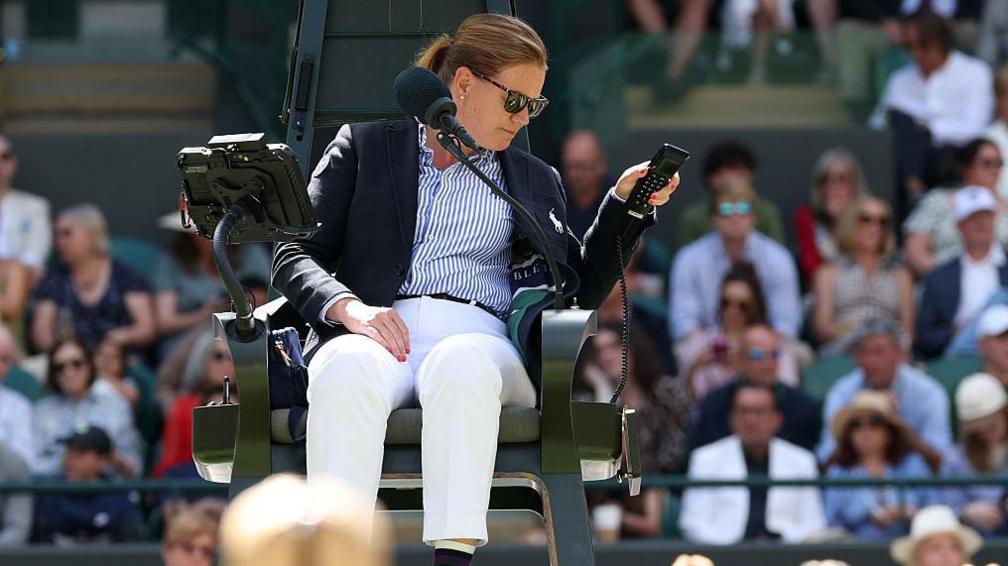In a striking incident during the quarter-final match at Wimbledon, the electronic line-calling system faced a malfunction that led to a decision to replay a point in the match between American tennis player Taylor Fritz and Russia’s Karen Khachanov. This controversy unfolded on Tuesday as tensions flared around the effectiveness of the technology implemented at this prestigious tournament, with heightened scrutiny following previous errors.
As the match progressed, a point in the first game of the fourth set was controversially interrupted when the electronic line-calling system reported a “fault.” At the moment of the incident, Fritz held a lead of 15-0 after winning the first two sets with scores of 6-3 and 6-4 but had encountered a setback in the third set, which he lost 1-6. After consulting over the phone, the umpire confirmed the issue, stating, “Ladies and gentlemen, we will replay the last point because of a malfunction. The system is now working.”
The malfunction incident added to the growing concerns surrounding the reliability of the technology designed to assist umpires in making accurate calls. Not too long before this incident, Wimbledon organizers had issued apologies due to a human error that incapacitated the system on Centre Court by mistakenly turning it off. This oversight had critical implications during a match between Anastasia Pavlyuchenkova and Britain’s Sonay Kartal, during which three calls went unnoticed. While the All England Club expressed confidence in the ball-tracking technology’s overall accuracy, the recent errors have raised serious questions about both the operational protocols and the reliability of the technology in high-stakes situations.
In response to the criticisms surrounding the reliability of the line-calling technology, officials took immediate corrective measures. After the earlier mishap involving Pavlyuchenkova and Kartal, changes were implemented to mitigate human mistakes associated with the operation of the electronic line-calling system. These reforms aim to bolster the confidence of players, officials, and fans alike in the integrity of decisions made throughout the tournament.
This incident shines a spotlight on the interplay between modern technology and traditional officiating in sports. As players and stakeholders increasingly depend on technology for accuracy in calls, any disruption significantly influences the dynamics of the game. The Wimbledon tournament is renowned for its strict adherence to tradition, yet it grapples with the challenges and complexities posed by integrating technology into its long-standing practices. The reliance on technology needs to strike a balance with the human element of officiating to ensure fair and accurate outcomes.
As the situation continues to develop, tennis fans, media, and sports analysts alike will be keenly observing both the response from officials and players, as well as the effectiveness of the newly introduced measures. With such high-profile incidents capturing global attention, the Wimbledon tournament’s management faces a significant challenge to restore faith in their technological systems, which are designed to enhance the sport’s fairness rather than undermine it. Further updates on this matter are anticipated, as the tennis community and policymakers assess how best to evolve in response to these increasingly common challenges at elite sporting events.











